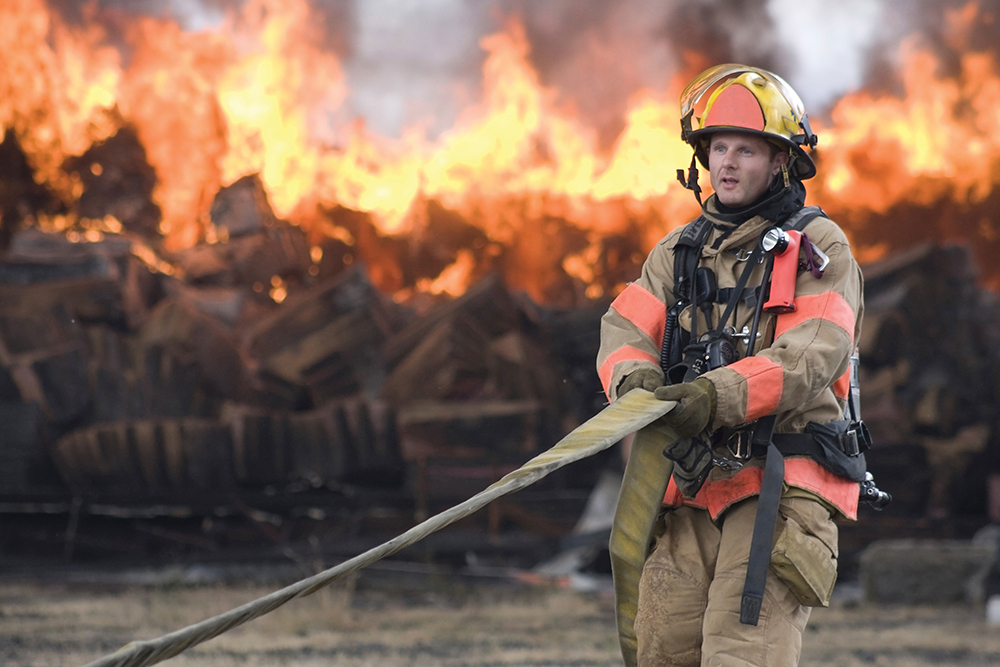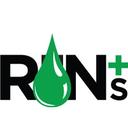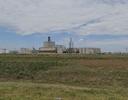Safety is Not a 4-Letter Word

October 28, 2013
BY Ron Kotrba
Simply put, a culture of safety must permeate commercial biodiesel production. Too often personnel, communities and property have been at risk of catastrophe because preventive safety regulations for facilities that handle flammable materials were not followed or had never been introduced. But the knife cuts both ways and, in some cases, governing bodies, particularly those enforcing the rules, lack inspection budgets, protocol or clear direction on whose responsibility it is to ensure these facilities are operating safely. Biodiesel producers have a confusing mix of regulations and jurisdictions they must follow and report to that includes OSHA, U.S. EPA and National Fire Protection Association codes; fire marshals and state regulations that may be more stringent, but not less than, federal regulations; and local ordinances, zoning and building codes that may be more restrictive than state requirements. Overlooked sometimes in the confusion is outreach to those who are most important at the time an incident occurs—the local fire departments and first responders.
This confusion isn’t isolated to the U.S. either. Last year in St. Boniface (Winnipeg), Canada, a major fire at Speedway International, a biodiesel facility situated in an industrial zone close to residential housing, rocked the city. It caused surrounding residents to evacuate the area, $15 million in damage, and locals to scratch their heads wondering who is responsible for their safety. A year later, a local committee approved a report stating the city must develop a plan to regulate industrial sites in the future, and requested another report be conducted on how inspections and enforcement of industrial sites are presently done.
St. Boniface city councilor Dan Vandal spoke on AM 680 CJOB radio. “I’ve got mixed feelings on the report,” Vandal says, “and parts of it are alarming.” The fact that railcars with hazardous materials are not subject to monitoring is “very alarming, because that’s a railroad part of town,” he says. “I’m disappointed that one year after, it’s not any clearer who is responsible for monitoring and inspecting industrial sites that have environmental licenses.” He says fire departments in the city have time to inspect other things, “but an industrial site with an environmental license is a priority,” he says. “I would like the fire departments and the province—because they are awarding these licenses—to put priority on doing inspections and follow up with industrial sites that have environmental licenses. I don’t know why it took a year to come back with a report. We’ve lost many months where we could have started the process.” Vandal did not respond to requests for an interview.
Alabama State Fire Marshal Ed Paulk has been in the news for his refusal, after two fires, to let a biodiesel plant in Jackson County reopen until it meets code. “People don’t seem to understand the wisdom of understanding what the code requires,” Paulk tells Biodiesel Magazine. He says the biodiesel plant was a retrofit in an old foundry. “There was no rhyme or reason, no engineering in determining what the requirements were, no engineering to determine what the life safety requirements were, and we can’t make a buck ‘til we produce product—that’s the thinking that everybody has,” Paulk says. “That’s what causes our bad record, and that’s what causes things to go wrong.
If any business in Alabama wants to open a facility that is 2,500 square feet or larger, or if it is an assembly or educational occupancy of any size, it has to be designed by a design professional. Retrofitting a foundry for biodiesel production is a change in occupancy, or subclassification within an occupancy, and kicks in the requirement that an architect or engineer must determine if the structure is compliant with the requirements.“If you change your occupancy type, from when the building was originally built, then you have to meet the codes as they are today,” he says. “You need to get this piece to this puzzle in place early, and our law requires that.” The state fire marshal can’t levy fines for violations, but it can shut a business down.
Advertisement
Advertisement
Like many states, Alabama adopted the National Fire Prevention Association and international building codes.“That’s what we design to, and that’s what the minimum standards are,” Paulk says. Under these codes, something that may seem obvious is, if you’re in an environment like a biodiesel plant where flammable vapors may be present, electrical wiring must be installed in an explosion-proof configuration, he says. But there are also static discharges and other sources to cause ignition. Methanol vapors are heavier than air so they’ll travel to the lowest point and remain until something moves them along or ignites them. “So design of our process to eliminate available vapors escaping into the atmosphere, that’s one method of reducing the fuel that you’re putting out there,” Paulk says. “And that’s all it is—a fuel—and its one job in life is sitting around and waiting for something to make it go ‘bang.’”
Larry Sullivan, owner of consulting firm Larry D. Sullivan and Co. Inc., says he’s always encouraged people in chemical design to look at fitness for purpose. “If you’re dealing with methanol, then it requires a very high fitness for purpose,” Sullivan says. “That means you’re going to have to pay more for the quality of the material and equipment.”
Another clear source of fire at biodiesel plants is spontaneous combustion, whether it’s ensconced filtration media or other material. Spontaneous combustion is a decomposition process of organic material, an exothermic reaction. “Once this process starts, as heat builds up, it will dissipate and continue to build until it combusts,” Paulk says. “If it feels warm, you’ve got to do something then to mitigate the hazard.”
In Orange, Texas, last spring, several people were killed, many first responders, in the infamous fertilizer plant explosion. “While fighting the fire, they had one of these ‘uh-oh’ moments, when all of a sudden things really went wrong,” Paulk says. “If, in fact, the people there had kept in close coordination with the local fire department, and understood the types of things they were storing—especially the quantity of things they were storing—chances are someone might have foreseen this hazard and prevented the catastrophic event.” Sullivan says a lot of biodiesel plants have emerged in recent years, “but they don’t have an outreach to the community,” he says, but to have hospitals, fire departments and EMS be prepared, they must.
Advertisement
Advertisement
Chris Barron, executive director of the State Firemen’s and Fire Marshals’ Association of Texas, also a volunteer fire chief, says as a local fire chief he’d like to know from biodiesel producers what they are producing, what daily production is and what materials routinely go in and out of the plant. “And then of course what kind of fire suppressants they have and their emergency response team,” Barron tells Biodiesel Magazine. “Those things might help us respond to possible disasters or medical calls.”
Iowa, home to 12 biodiesel and an astounding 41 ethanol plants, only has one inspector in the fire marshal’s office handling flammable liquids plants: Jeffrey Miller, deputy state fire marshal. He says projects are required to submit a plan review before construction—engineered drawings of the plant, what they have for fire protection and ensuring everything per the code—but existing plants are not subject to inspection unless a complaint is lodged.
“Our adopted codes are the NFPA, which basically covers the major requirements for the facilities,” Miller says. “One of those requirements is that the facility should have an emergency action plan. We encourage the facility to communicate this with the local jurisdiction that would be responding to them.” But, he says, since most of these facilities are in rural areas, many of the fire departments are volunteer. “Most of our volunteer fire departments aren’t even equipped well enough if something catastrophic happened at one of these facilities,” he says. “Most of the small departments aren’t going to have adequate enough foam on hand. Through NFPA, which we’ve adopted through the state, it requires that the facility themselves should provide, or have, the equipment to suppress a fire. Basically, we put it all on the plant owner to be able to provide enough fire suppression or fire protection for the facility.”
Years ago, U.S. Congress mandated OSHA and EPA to develop regulatory requirements that would, when companies implemented it, help prevent catastrophic releases of hazardous chemicals: the Process Safety Management program. Biodiesel producers with more than 10,000 pounds (only 1,250 gallons)—virtually all commercial facilities—must implement a PSM program. “Within that program, there’s one element referring to Process Hazard Analysis,” says Robert Voncannon, senior consultant with Bureau Veritas. “OSHA requires companies that fall within their defined scope to do a process hazard analysis and a HazOp (hazard and operability analysis) is one methodology recognized as acceptable.” Voncannon adds that if a plant meets OSHA’s PSM threshold, it’s likely also subject to EPA’s Risk Management Plan, adding more regulatory red tape. “If you’re subject to that rule, then you have to submit that to EPA,” he says. Sullivan says HazOp analyses for biodiesel plants “should really be a high-order type simply because you’re dealing with methanol.”
HazOp analysis is a highly structured methodology involving examination of a process or system for possible deviations from the design, construction, modification, or operation intent, Vancannon explains. “To start a HazOp study, you take information about the process, the P&IDs (piping and instrumentation diagrams), break that whole process down into manageable pieces called nodes,” he says. “Once you identify each node, you subject each to questions that are formulated around guidewords.” There is a specific set of guidewords that the methodology requires following (No or Not, More and Less, As Well As, Part Of, Reverse, and Other Than). Then each parameter of every node is subject to the guidewords. The methodology itself is used to identify hazards or operational problems. “It doesn’t correct anything in itself,” he says. “If you wanted to build in safety stops in your process, it would give you information on the severity of a possible deviation.”Once consequences to those deviations are identified, a qualitative risk ranking is conducted, leading to development of a risk matrix. “With that information, you can determine what else needs to be done, what other safeguards need to be put into the system,” he says. “Once you identify the recommended actions, then you assign responsibility in your organization to ensure that those actions are taken or the recommendation addressed.”
In the end, it appears that, as Miller says, safety of personnel and the community is up to the plant. “I wish we could outreach more on whether they’re communicating with the local volunteer fire departments,” he says. “And a lot of [departments] do get involved because they know that, eventually, they will get called to the facility. I don’t know how well they’re working with the locals, but we haven’t received too many complaints that they are or aren’t.” Paulk says his No. 1 recommendation is simply follow the rules. “If you want to go into business, find out what the rules are,” he says. “Contact your local building and fire authorities, find out what the requirements are, and follow those rules. And above all else, just obey common sense.” After all, once those big, red trucks turn on their lights and sirens and roll out of the station, nobody’s a winner.
Author: Ron Kotrba
Editor, Biodiesel Magazine
218-745-8347
rkotrba@bbiinternational.com
Related Stories
Biodiesel capacity in the U.S. and Canada dipped slightly stable in 2024, with several renewable diesel producers reporting headwinds and lower margins alongside a drove of SAF projects in various stages of development.
The IEA’s Task 39 group has new research regarding the development and status of the sustainable aviation fuel industry.
The U.S. EPA on Nov. 16 released updated RIN data, reporting that nearly 2.11 billion RINs were generated under the RFS in October, up from 1.81 billion generated during the same month of last year.
Conestoga to host SAFFiRE cellulosic ethanol pilot plant
Conestoga Energy and SAFFiRE Renewables LLC announced on Nov. 16 their agreement for Conestoga to host SAFFiRE’s cellulosic ethanol pilot plant at Conestoga’s Arkalon Energy ethanol facility in Liberal, Kansas.
Officials at Calumet Specialty Products Partners L.P. discussed the company’s proposed plans to boost sustainable aviation fuel (SAF) production at its Montana Renewables biorefinery during third quarter earnings call, held Nov. 9.
Upcoming Events










